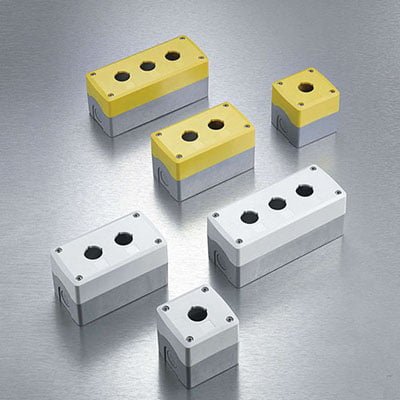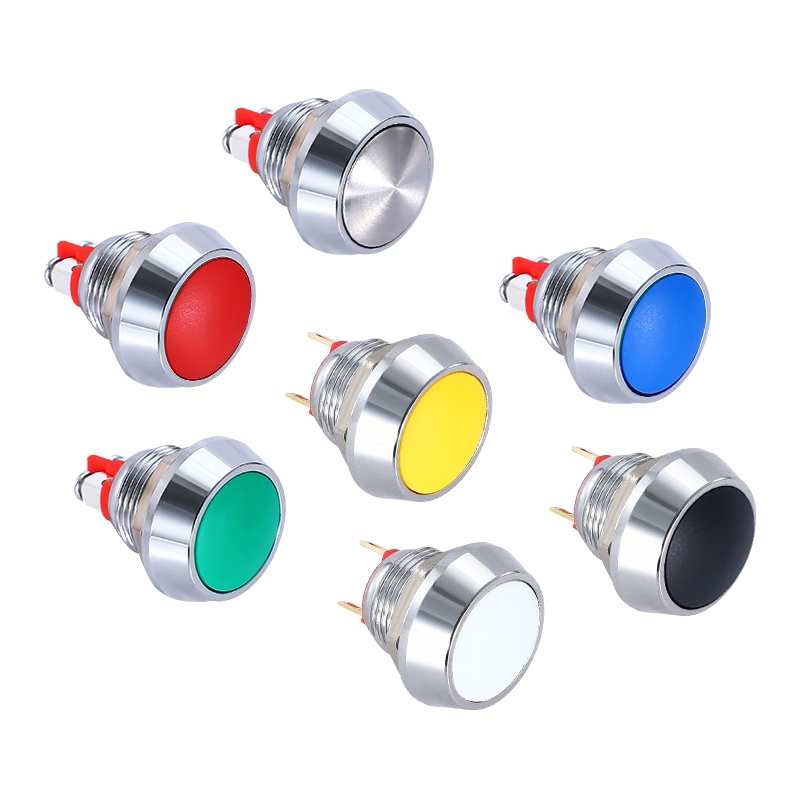Knowledge points on application of plastic button boxes
What is a plastic button box
The plastic button box is a protective device that is mainly used to install and fix various buttons and switches to facilitate operation and protect the components from the external environment. This kind of button box is mostly made of plastic material and is widely used in industrial and civil fields because of its light weight, corrosion resistance and good electrical insulation. Plastic button boxes usually have transparent or translucent lids to facilitate observation of the internal structure without affecting operation. Its design can adapt to various complex and harsh environments, such as dustproof, waterproof, etc., to ensure the safe and stable operation of electrical equipment.


Common types of plastic button boxes
There are several common types of plastic button boxes based on their design, use and installation methods, including:
- Standard button box: This is the most common type and is typically used for basic switch operations. Their simple structure makes them easy to install and use, making them suitable for home and light industrial applications.
- Emergency Stop Button Box: This type of button box is designed for use in emergencies and usually features a prominent red button. They are usually installed in easily accessible locations to quickly stop the operation of a machine or equipment.
- Control Station Button Box: Suitable for complex equipment that controls multiple functions. This kind of button box can contain multiple buttons, switches and indicator lights to operate and monitor the status of various devices.
- Waterproof button box: Specially designed for outdoor or humid environments, it has good sealing performance, can prevent water and dust from entering, and protect internal electrical components.
- Locked Button Box: This type of button box comes with a locking mechanism to prevent unauthorized operation or access. Suitable for applications requiring a high level of security.
- Multi-hole button box: Designed with multiple holes and interfaces for installing different types of switches and buttons for easy customization and extended functionality.
Components of plastic button box
The components of a plastic button box usually include the following key elements, which ensure its functionality and durability:
- Shell: Usually made of high-strength plastic material such as ABS or polycarbonate. Enclosures protect the electrical components inside from physical damage and environmental factors such as water, dust, and chemicals.
- Buttons and switches: This is the core component of a button box and can be a single button or a combination of multiple buttons. These buttons may be push, turn, or pull types and are used to control equipment or machines connected to the button box.
- Covers: Covers are usually transparent or translucent, allowing the user to see the buttons and indicator status inside while providing additional protection. Covers may be equipped with a locking mechanism to prevent unauthorized operation.
- Seal: A rubber or silicone strip used to improve water and dust resistance. These seals ensure that the button box can function properly even in harsh environments.
- Installation accessories: including screws, hooks and brackets, etc., used to fix the button box to the wall, panel or machine.
- Terminal blocks: used to connect wires to ensure the transmission of power and signals. Terminals need to be designed with ease of use and safety in mind to facilitate installation and maintenance.
Advantages of using plastic button boxes
Using plastic button boxes has several advantages that make them very popular in several industries, mainly including:
- Corrosion resistance: Plastic materials have good corrosion resistance and can resist the effects of many chemicals, salt water and other aggressive environments. This characteristic makes plastic button boxes particularly suitable for chemical, marine and outdoor environments.
- Portability: Compared with metal button boxes, plastic button boxes are lighter and easier to carry and install, reducing the cost and labor intensity of transportation and installation.
- Electrical insulation: Plastic is an excellent insulating material, which can effectively prevent electrical faults and the risk of electric shock during operation, and enhances the safety of use.
- Cost-Effectiveness: The cost of producing plastic button boxes is relatively low, making them a cost-effective solution for industrial applications that require high-volume use of button boxes.
- Customization flexibility: Plastic materials are easy to form and process, and button boxes can be produced in a variety of sizes and shapes to suit different installation needs and aesthetic requirements.
- Waterproof and dustproof performance: Many plastic button boxes are designed with good sealing performance, which can effectively prevent water and dust from entering and protect internal electrical components, which is especially important for applications in outdoor or harsh environments.
- Easy maintenance: The plastic surface is smooth, easy to clean and not prone to dirt accumulation. This simplifies maintenance and extends the service life of the product.
How to choose the right plastic button box
When purchasing the right plastic button box, you should consider the following key factors to ensure you choose a product that meets your specific needs and environmental conditions:
- Application environment: First determine the environment in which the button box will be installed. If it is an outdoor or humid environment, you should choose a button box with a high waterproof rating. For chemical or corrosive environments, chemically resistant materials need to be selected.
- Size and configuration: Select the appropriate size button box based on the number and size of switches and buttons that need to be installed. Make sure there is enough space for all components, taking into account possible future expansion needs.
- Materials and Durability: Check the quality and durability of plastic materials. High-quality polycarbonate or ABS plastic provides better protection and longer service life.
- Security Features: For environments that require additional security measures, choose a button box with a locking feature to prevent unauthorized operation. At the same time, consider the electrical insulation performance of the button box to ensure safe operation.
- Installation method: Consider how the button box will be installed, whether it will require specific mounting brackets or whether it can be easily mounted to an existing panel or wall.
- Manufacturers and brands: Choose reputable manufacturers and brands. Learn about user reviews and product guarantees so you can purchase proven, high-quality products.
- Budget and Cost: Determine your budget range and based on that, compare the price and performance of different brands and models to find the most cost-effective option.
- Extra features: If needed, consider a button box with extra features, such as built-in indicator lights or multi-function operating buttons, which can provide extra convenience and functionality.
Application scenarios
Due to their durability, safety and versatility, plastic button boxes are very useful in a variety of applications, including:
- Industrial control systems: In manufacturing and production lines, plastic button boxes are used to install control and stop buttons so operators can quickly control machines. These button boxes are built to withstand long-term use and the challenges of industrial environments.
- Commercial facilities: In commercial buildings such as shopping malls or office buildings, plastic button boxes are used to control facilities such as lighting systems and security doors. Their durability and aesthetics make them ideal for these environments.
- Transportation facilities: In subway stations, train stations or airports, plastic button boxes are often used for the operation of emergency stop systems or information release systems. Their high visibility and ease of operation support public safety.
- Outdoor installations: Due to its waterproof and dustproof properties, plastic button boxes are suitable for outdoor environments such as parks, stadiums or lighting control of outdoor billboards.
- Ships and offshore equipment: On ships or other offshore equipment, plastic button boxes are widely used because of their corrosion resistance to control the start, stop and other functions of the equipment.
- Special Vehicles: On emergency service vehicles such as fire trucks, ambulances and police cars, plastic button boxes are used to operate alarms, lights and other important equipment.
- Home and residential applications: In smart home systems, plastic button boxes can be used to control home equipment, lighting and security systems, providing a convenient and safe living environment.
These application scenarios demonstrate the diversity and applicability of plastic button boxes, which can meet a variety of needs from high-intensity industrial applications to daily life.

